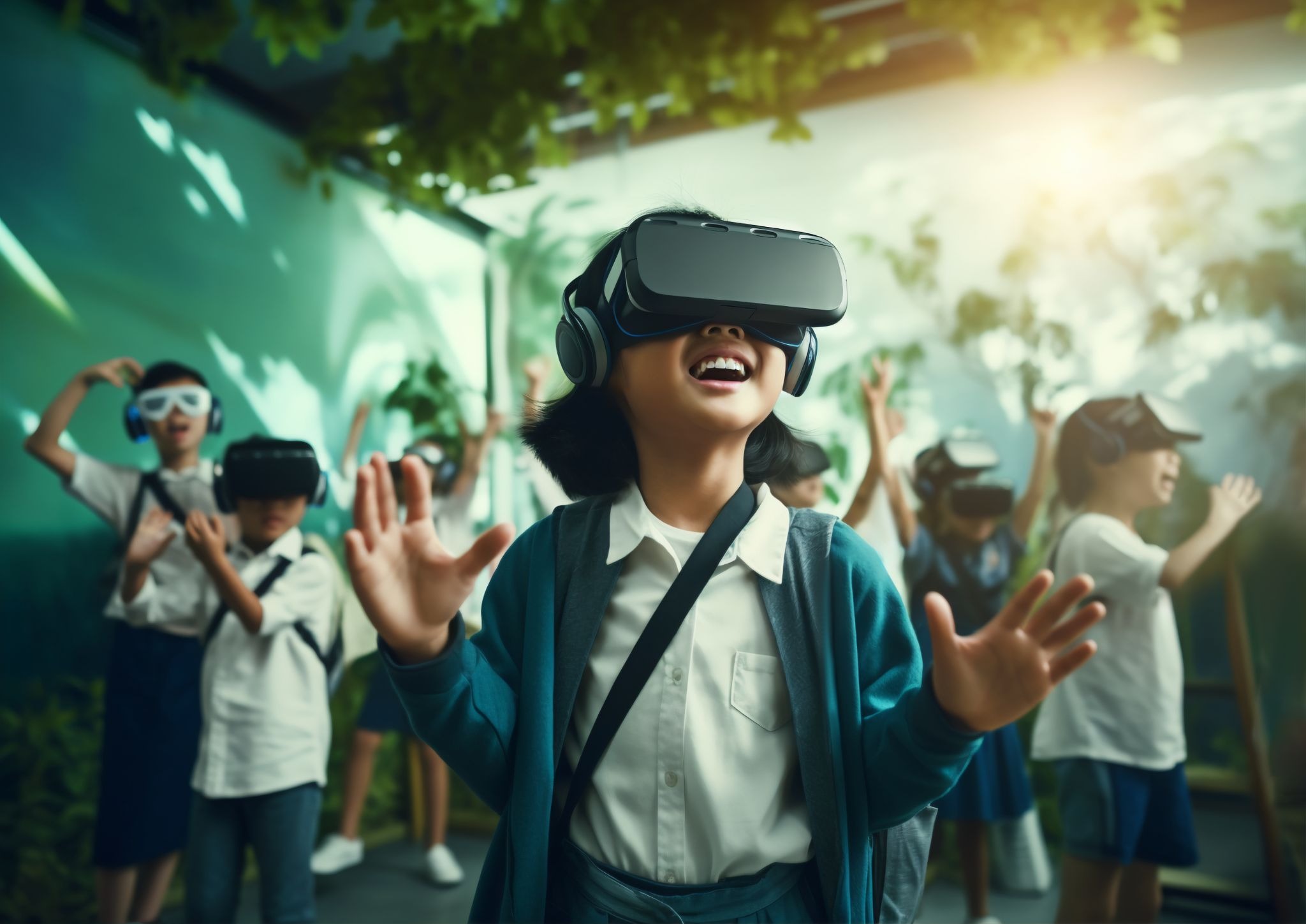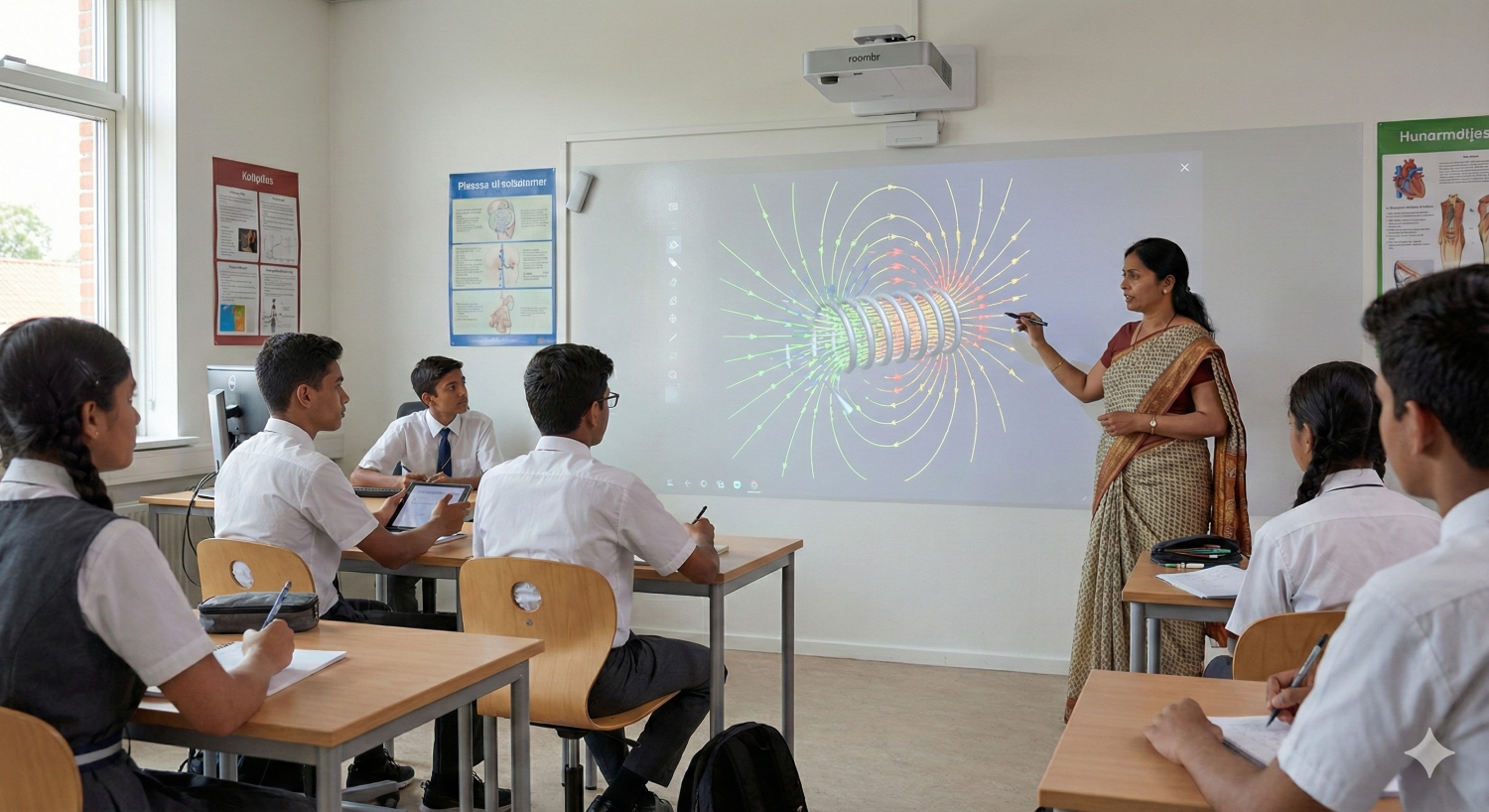How Immersive Learning (AR/VR) is Redefining Smart Classroom Solutions

The evolution of the smart classroom has been a multi-step journey. The first wave was about access—introducing interactive whiteboards and internet connectivity to bring the world's information to the front of the room. Now, we are entering the next definitive phase: the shift from passive information to active experience.
This is the domain of immersive learning, a pedagogical strategy that uses technologies like Augmented Reality (AR) and Virtual Reality (VR) to place students directly inside their own lessons.
While it is one of several key trends in the high-tech classroom, its unique potential to solve fundamental, long-standing educational challenges demands a deeper analysis. This is not about technology for its own sake. It's about a new set of smart classroom solutions that can fundamentally change how students learn.
This article will analyze the practical applications of immersive learning and its role in the modern digital classroom.
Simplifying the Terminology: AR vs. VR vs. Immersive Learning
It is essential to be precise with our terms, as each plays a distinct role within the smart classroom.
- Immersive Learning: This is the pedagogical strategy, or the "why." It is an educational method that uses highly engaging, interactive environments to move the student from the role of a passive observer to that of an active participant.
- Virtual Reality (VR): This is a transportation technology. It uses a headset to replace the user's physical surroundings with a completely digital environment. The student is no longer in the classroom; they are on Mars, inside the Colosseum, or navigating the human circulatory system.
- Augmented Reality (AR): This is an enhancement technology. It overlays digital information onto the user's view of the real world, typically via a tablet or smartphone. The student remains in their classroom, but they can see and interact with a 3D model of a beating heart or an ancient artifact on their desk.
This pedagogical shift is critical because it engages experiential and kinesthetic learning pathways. Decades of educational research have confirmed that "learning by doing" is profoundly effective. Studies show that retention rates from experiential learning can reach as high as 75%, which starkly contrasts the 5%-10% retention rates typically associated with traditional lectures or reading.
How the Evolving Smart Classroom Solutions Are Solving Classroom Challenges

Image by Freepik
The value of any new smart classroom equipment is measured by the problems it solves for educators. This is where immersive learning transitions from a "nice-to-have" to a core pedagogical tool.
1. Making the Abstract Concrete
The Challenge: How do you effectively teach abstract or invisible concepts? A 2D textbook diagram of a molecule, a DNA helix, or the physics of an engine is a flat, static representation of a dynamic, 3D concept.
The Smart Classroom Solution: Immersive tech makes these concepts tangible. An AR-enabled lesson can "place" a running engine on a student's desk, allowing them to walk around it and see how the pistons fire. A VR lesson can "shrink" a biology class to the cellular level to witness photosynthesis in action. For STEM, this is a revolutionary shift from abstract memorization to intuitive understanding.
2. Overcoming Logistical and Financial Barriers
The Challenge: Every educator faces real-world limitations. You cannot provide 30 individual, high-powered microscopes. You cannot safely let students experiment with volatile chemicals. And for 99% of schools, a field trip to the Pyramids is logistically and financially impossible.
The Smart Classroom Solution: Virtual labs and virtual field trips offer a clear return on investment. In a VR lab, students can conduct complex, high-risk experiments in a 100% safe, repeatable, and zero-cost environment. It allows for mastery through practice without material waste or physical danger. Furthermore, virtual excursions provide an equity of experience, allowing a history class in any location to walk the streets of ancient Rome, making world-class cultural capital accessible to all.
3. Developing "Untestable" Skills
The Challenge: How do you teach and, more importantly, practice critical soft skills like public speaking, collaboration, and empathy? These vital competencies are difficult to cultivate through traditional instruction.
The Smart Classroom Solution: This is perhaps the most profound application. A student can use a VR simulation to practice a presentation in front of a realistic, AI-powered virtual audience, allowing them to build confidence and refine their delivery in a safe, private setting. Even further, VR can be used to experience a situation from another person's perspective, providing a powerful, visceral tool for building genuine empathy.
Immersive Learning: A Key Part of a Complete Classroom Ecosystem
It is important to view immersive learning not as a standalone island, but as a powerful component that integrates with your entire digital classroom. These tools are not meant to replace foundational technology; they are designed to enhance it.
For example, immersive, individual-focused learning is the perfect complement to whole-group instruction. A teacher can introduce a complex subject on the room's central interactive flat panel, and then have students use AR on their tablets to explore that concept in greater, hands-on detail. This creates a seamless workflow from macro-level teaching to micro-level discovery.
Furthermore, the true power of these simulations is unlocked when they are combined with other advanced technologies. The same artificial intelligence that helps personalize a student's curriculum is also what powers the realistic, responsive virtual characters a student might practice their language skills with in a VR simulation.
Ultimately, while foundational tools like high-quality cameras and microphones are essential, a truly future-proofed smart classroom equipment list must also account for these next-generation immersive tools to create a complete and effective learning environment.
Addressing the Practical Hurdles: Cost and Implementation
No "industry insight" is complete without addressing the practical realities. For educators and administrators, the primary concerns are cost and training.
1. The Cost: The assumption is that immersive learning requires 30 expensive, high-end VR headsets. This is not the case. A phased implementation, often beginning with Augmented Reality, is a far more common entry point. Most AR applications are designed to run on the very tablets or Chromebooks a school already owns. This allows an institution to integrate immersive learning with its existing hardware.
2. The Implementation: Technology is only a tool; its value is unlocked by the educator. A box of new hardware delivered without a plan will fail. Success depends on adopting an ecosystem, not just a product. This means choosing smart classroom solutions that are bundled with curriculum-aligned content libraries and robust professional development programs to ensure teachers feel empowered, not overwhelmed.
Key Takeaway
The evolution of the digital classroom is clear. The first wave was defined by accessing information. This next frontier is defined by experiencing knowledge.
AR and VR are not gimmicks. They are sophisticated pedagogical tools designed to solve some of the oldest and most difficult challenges in education. They are here to boost retention, overcome real-world limitations, and build critical skills. They are not replacing the teacher; they are providing them with a new, powerful set of tools to create a more engaged, effective, and equitable smart classroom.
Ready to explore how these solutions can integrate into your institution? Discover how Roombr's smart classroom solutions provide the flexible, all-in-one foundation for the next generation of teaching and learning.
Foziya Abuwala
Share
Step Into the future of
Education with Roombr

















